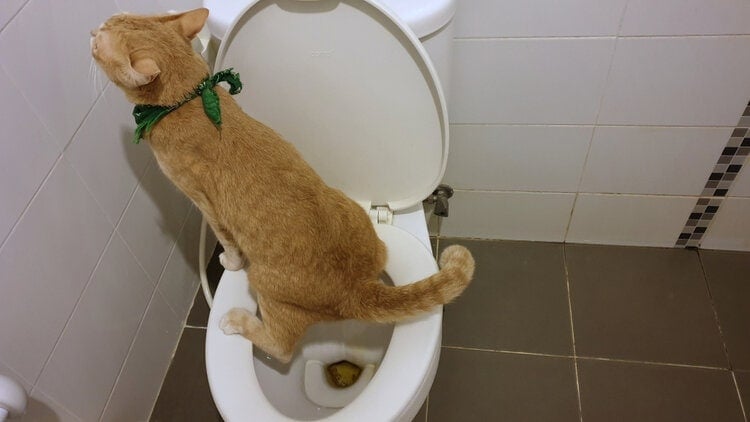The Risks of Flushing Cat Poop in Your Toilet - Preventive Steps
Click HereWe've unearthed the article pertaining to How to Dispose of Cat Poop and Litter Without Plastic Bags listed below on the net and reckoned it made sense to share it with you here.

Intro
As pet cat proprietors, it's vital to be mindful of how we get rid of our feline buddies' waste. While it might seem hassle-free to flush feline poop down the commode, this method can have destructive consequences for both the atmosphere and human health.
Alternatives to Flushing
Thankfully, there are more secure and more accountable methods to take care of cat poop. Think about the adhering to choices:
1. Scoop and Dispose in Trash
One of the most common method of throwing away pet cat poop is to scoop it right into an eco-friendly bag and toss it in the garbage. Make sure to utilize a dedicated trash inside story and get rid of the waste promptly.
2. Usage Biodegradable Litter
Opt for eco-friendly pet cat trash made from materials such as corn or wheat. These clutters are environmentally friendly and can be safely dealt with in the trash.
3. Bury in the Yard
If you have a yard, consider hiding pet cat waste in an assigned area away from veggie yards and water sources. Make sure to dig deep sufficient to prevent contamination of groundwater.
4. Mount a Pet Waste Disposal System
Purchase an animal waste disposal system especially developed for cat waste. These systems utilize enzymes to break down the waste, decreasing smell and environmental influence.
Health and wellness Risks
Along with environmental problems, flushing feline waste can also present wellness risks to people. Cat feces might include Toxoplasma gondii, a parasite that can create toxoplasmosis-- a possibly extreme illness, especially for expecting females and people with damaged body immune systems.
Ecological Impact
Flushing cat poop introduces damaging microorganisms and parasites into the water system, presenting a considerable danger to water environments. These pollutants can negatively impact aquatic life and concession water high quality.
Final thought
Responsible pet possession prolongs beyond providing food and sanctuary-- it likewise involves correct waste administration. By avoiding purging pet cat poop down the toilet and choosing different disposal methods, we can decrease our environmental impact and secure human health and wellness.
Why You Should NEVER Flush Cat Poop (and/or Litter) Down Your Toilet
The Problem with Litter
The main function of litter is to solidify and adhere to your cat’s waste. While this makes litter excellent for collecting cat poop and urine, it’s also the exact property that makes it a nightmare when flushed down the toilet.
Cat litter can and will clog pipes. There is non-clumping litter, but it’s still quite heavy and can build up in pipes. This is true even of supposed “flushable litter.”
The problems only compound when the litter is already clumped into cat waste. Toilet paper is among the more flushable things, and even too much of that will clog a toilet.
The Problem with Cat Poop
Sewers and septic systems are designed with human waste in mind. The microbes that help break down human waste don’t work on cat waste. Additionally, cat poop plays host to the parasite Toxoplasma gondii.
When flushed, this parasite can enter the environment in places it was never meant to, posing a risk to pregnant women, their unborn children, and other people with compromised immune systems. While it might not seem possible, flushing cat poop can indeed introduce this parasite to the public water supply.
These reasons are why, even if you’ve trained your cat to go on the toilet and flush, which is possible, it’s still not a good idea. Also, pregnant women and the immunocompromised shouldn’t change litter, either.
How to Handle Litter
The best way to handle litter is to simply put it in a plastic bag and place it in the trash. Avoiding environmental risks and possible plumbing damage is worth the extra effort.
You can also invest in devices that seal away your cat’s waste in a separate compartment, so you don’t have to change the litter nearly as often. They’re also safer for pet owners because they limit the possibility of Toxoplasma gondii exposure.
Disposing of litter the old-fashioned way will ensure you won’t have to worry about any issues that flushing the waste can potentially cause.
Take Care of Clogged Pipes with Stephens Plumbing, Heating & Air Conditioning
The reasons you should never flush cat poop down your toilet are numerous, but sometimes the inevitable happens despite your best efforts.
Stephens Plumbing, Heating & Air Conditioning is ready to help if you’re experiencing litter-blocked plumbing. Whether you need us in an emergency or want to schedule regular maintenance, we’re here for you.
https://www.stephensplumbing.net/bathroom-plumbing/never-flush-cat-poop-down-your-toilet/

As an avid reader about Can You Flush Cat Poo or Litter Down the Toilet?, I thought sharing that excerpt was worth the trouble. Loved our piece? Please share it. Let somebody else find it. We appreciate reading our article about Can You Flush Cat Poo or Litter Down the Toilet?.
Schedule Appointment